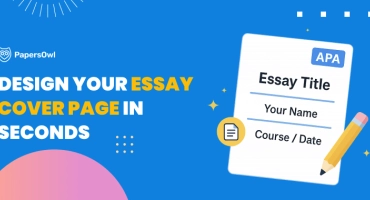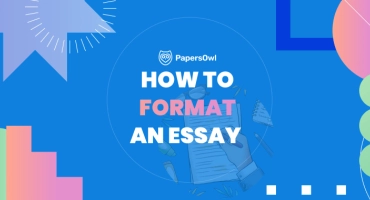What Is an Appendix in Writing
Table of contents
This guide explains what is an appendix in writing and how to format one in APA, MLA, and Chicago.
- Purpose: An appendix stores supporting material — raw data, survey instruments, transcripts, long or complex tables/figures.
- Placement: APA — after References; MLA — before Works Cited; Chicago — varies (confirm publisher or university rules).
- Labeling: Start each on a new page: Appendix A, Appendix B, etc., with a clear, descriptive title.
- Numbering: Number by appendix (e.g., Table A1, Figure B1); restart numbering within each one.
- Cross-references: Cite precisely in text (e.g., “see Appendix B, Table B3”).
- Scope: Keep core results and key figures in the main text; put only supporting details in appendices.
- Formatting: Follow the required style (e.g., double spacing, 1-inch margins, continuous page numbers).
Notes: Use “appendix” consistently. “Annex” appears in reports; “addendum” usually means a post-publication update — avoid mixing them unless your guidelines require it.
For a roadmap on creating or formatting appendices, make sure to consult an essay service for structure and style.
What Is an Appendix?
If you ask what is an appendix in a paper, it is a final section that stores supporting items not suited to the main text.
- It sits after the references and stays separate from the core discussion.
- It lets readers access raw data, long tables, and full transcripts without breaking the flow.
- It allows only the materials directly relevant to your main narrative.
The appendix in a research paper could contain questionnaires, comprehensive methodology, raw data, code snippets, or interview excerpts. These materials give depth but do not substitute for results in the main body.
If you have multiple appendices, label them Appendix A, Appendix B, etc., and start each on a new page.
Follow the required format and number tables/figures by annex (Table A1, Figure B1).
For a clear-cut and student-friendly guide to document structure, see write a research prospectus for paper.
Why use an appendix:
- Keep your paper focused: Appendices let you include extra details without cluttering the main text.
- Show transparency: Provide raw data, full questionnaires, or detailed methods for reproducibility.
- Support your claims: Allow readers to verify numbers, charts, and analyses.
- Optional for readers: Not all readers need to dive into the details; appendices give them the choice.

Things to Include (and Things to Avoid)
Materials That Belong in an Annex
If you wonder what is an appendix in a report, think of it as a safe space for additional information that supports the study.
Learning how to write an appendix helps keep the paper readable and clean. Thus, place each one on a new page and include items like:
- Questionnaires and survey instruments.
- Raw statistical data or software output.
- Long interview transcripts or excerpts.
- Large annex tables, charts, or figures that cannot fit in the main text.
- Maps, diagrams, and long lists.
- Technical notes or glossaries.
If you have multiple appendices, use clear labels. This will prevent readers from getting lost and keep the format consistent.
Information That Stays in the Core Writing
It is just as vital to know how to make an appendix as what should not go there. The main body of your paper must carry the thesis and the core results.
Keep in the body paragraphs:
- Key results and claims.
- Crucial figures and tables that are central to your point.
- Detailed arguments or analysis steps.
- Literature review and short summaries.
Besides, each annex must be on a separate page with a clear title and proper format. This ensures readers can follow your work without confusion.
APA 7 Appendix Pages — Step-by-Step
Where Does APA Style Go?
In APA style, the annex is placed after the reference list on its own page.
The new appendix begins with a clear label and title so readers know where to find supporting materials. Even if there is only one appendix, it still deserves a separate page for clarity.
All figures, tables, or charts in this section also follow APA numbering rules. For guidance on overall structure, see APA abstract format rules.
Label & Title
Start with Appendix or Appendix A in bold, centered, then move to the next line for the appendix title. The title is also bold, centered, and describes the content clearly.
Use a capital letter for each annex label. This ensures your readers can identify figures or tables easily. For citing in-text, follow how to cite appendix in APA guidelines.
Example: Appendix A — Survey Instrument for Study Participants
Spacing, Indentation, Pagination
Appendices follow APA body-text rules:
- Double-spaced.
- 1-inch margins.
- Sequential page numbers continue from the main text.
Each annex is on its own page. Figures and tables follow standard APA format. This keeps your paper and annex aligned with formal appendix writing expectations.
Tables & Figures Inside Appendices
Label tables as Table A1, Table A2; figures as Figure B1, Figure B2. Restart numbering within each annex.
When referring to the text, write “see Table A3” or “refer to Figure B1.” The annex should include all charts, images, or data clearly so that the research paper is easy to follow.
Multiple tables or one figure per annex are both fine as long as the numbering is clear.
How to Refer in the Text?
For in-text citation, keep it simple:
- “…for details, see Appendix A.”
- “…full transcript is in Appendix 2, Table 1.”
Mini-example of an APA appendix page:
Appendix A — Interview Transcript Excerpt
Participant 1: How did you approach the field survey?
Researcher: We recorded soil samples at three depths.
Participant 1: Did you follow a fixed protocol?
Researcher: Yes, each site had identical instruments.
Table A1: Sample Soil Analysis
| Sample | pH | Moisture (%) | Notes |
| 1 | 6.8 | 12 | Normal |
| 2 | 7.1 | 14 | Slightly dry |
All pages follow the APA style, with double spacing and clear labels for figures and tables.
MLA vs APA vs Chicago Manual
This table helps readers and students quickly compare style guides for appendix placement. Follow each style’s rules carefully to keep your document, writing consistent.
| Style | Annex Placement | Notes |
| APA | After References | Each annex is on a separate page, numbered clearly |
| MLA | Before Works Cited | Order: annex → notes → works-cited |
| Chicago | Flexible | Often, before the Bibliography or after the last chapter in books, check the publisher |
For Chicago rules on footnotes, see Chicago style footnotes.
Free Examples You Can Copy
If you want to see how appendices actually look in a paper with a proper title, format, and examples, check this resource:
These samples illustrate the basic format used in professional papers and show how to organize supplementary information so it does not interrupt your main writing. Each annex demonstrates where to place relevant information and how to label it clearly.
APA Examples:
- Appendix A: Survey Instrument — a short survey with 3–5 questions. This example shows how to present data collection tools in APA, keeping the writing clean and the paper readable.
- Appendix B: Interview Transcript — an excerpt with participant–researcher dialogue. Use this format to include raw transcripts while still focusing the main paper on analysis.
- Appendix C: Additional Tables — tables (Table C1, Table C2) with soil data. This demonstrates handling figures and images inside appendices, numbering them by section.
MLA Examples:
- Appendix (Survey Instrument) — same order and content as the APA version, but shown in MLA placement.
- Appendix (Interview Transcript) — demonstrates how to add supplementary dialogue in MLA style.
- Appendix (Tables) — example tables labeled in MLA format.
These illustrations follow the same order across both APA and MLA so readers can compare how appendices are treated in different style guides. Think of them as detailed explanations you can use when preparing your professional papers or looking for further reading on annex formatting.
By following these examples, you ensure your writing remains clear, your appendix B or C is properly labeled, and your readers can access all the relevant information without breaking the flow of the main paper or bibliography.
Common Mistakes in Research Paper
Students often make avoidable errors with appendices.
- Forgetting to reference the annex in the paper. Always write “see Appendix A”.
- Mixing essential results into the annex instead of keeping them in the main text.
- Using incorrect appendix labels (Appendix vs Appendix A).
- Putting everything into one appendix instead of creating a separate one for each data type.
- Inconsistent numbering for charts, images, and tables.
- Formatting that doesn’t match APA, MLA, or Chicago rules.
Check the following example documents to ensure your appendix section has the correct title, labels, and format. This will prevent confusion and guide your readers to relevant data.
Before Submission
Make sure your paper meets these annex standards before submission.
Check off this list, attach your appendices, and submit confidently — your paper is clear, transparent, and ready for review!
Conclusion
In a nutshell, the art of an appendix in writing is necessary for creating detailed and organized papers. PapersOwl gave you this small guide so you could:
- Quickly identify relevant extra information.
- Organize content logically.
- Maintain formatting and consistent in-text citations.
In fact, a well-written appendix page improves the primary text’s clarity and adds to the research’s overall credibility. Thus, the appendix for a paper is an important tool for scholars who want to give clear, comprehensive documentation of their work. It may also be proof of your hard work.
With the PapersOwl’s guide, your research paper appendix example will promote deeper comprehension of the study issue!







